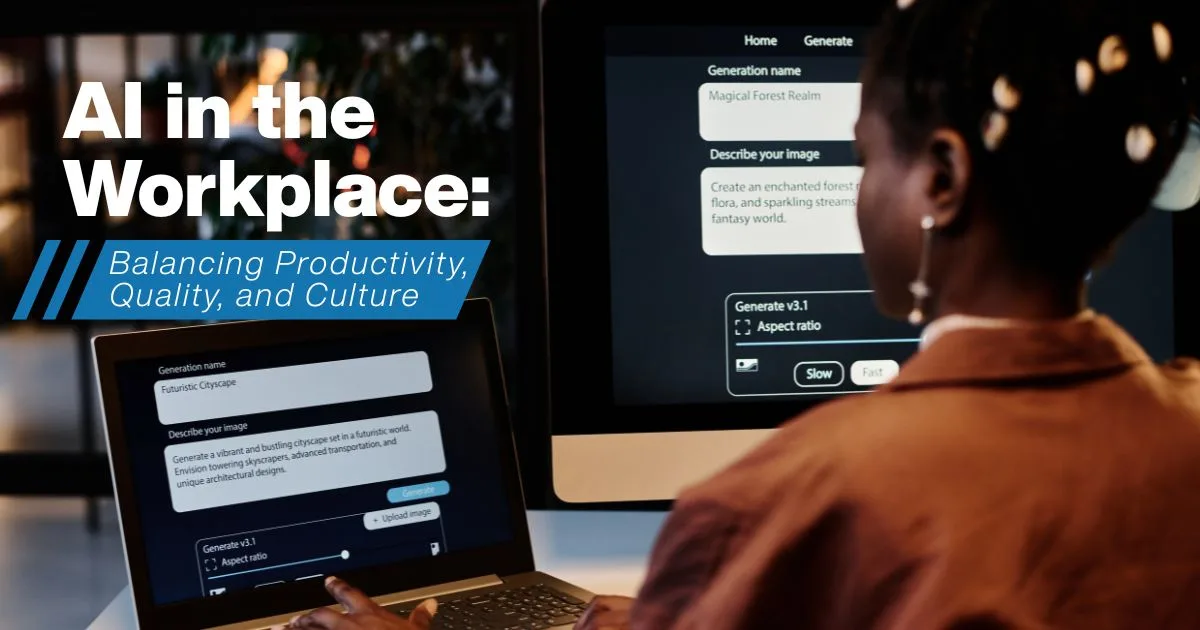Hey everyone,
AI has quickly become the new “power tool” in the workplace. For individuals, it feels like a win—tasks that used to take an hour can now be done in 15 minutes. The natural reaction? “Great, I finished early… now I can relax until the next task.”
But here’s the tension:
From a company’s perspective, that same task done in 15 minutes doesn’t mean “you’re done.” It means you now have 45 more minutes to contribute at a higher level.
This is where the disconnect begins.
AI in the Workplace: Employee Productivity Challenges
- “I did what I was assigned. Why do more if I’m paid the same?”
- AI becomes a shortcut to finish work faster, not necessarily better.
Employee resistance to AI productivity tools
Employees often see AI as a way to lighten their load, not as an invitation to expand their impact. Without guidance, this mindset can erode accountability.
AI in the Workplace: Company Expectations for Productivity
- “We invested in this tool so you can deliver more value during the time we’re paying you for.”
- AI should help raise the bar, not lower the workload.
Company perspective on AI productivity tools
For leaders, AI is about efficiency and scale. It’s a way to maximize both individual and team output within the same time frame.
AI at Work: The Role of Trust and Governance
The knee-jerk response is to start micromanaging output. But the better path is to reframe expectations around quality, not just quantity.
AI output still needs human ownership—whether it’s cleaning up messy code, refining AI-generated content, or validating accuracy. Speed without quality only creates new problems.
Leaders should communicate AI’s role clearly:
- Not to replace employees, but to enhance their impact.
- Not to churn out more low-quality work, but to elevate standards of excellence.
Human + AI Collaboration for Better Quality and Efficiency
Think of it as collaboration:
- Human sets direction ? clear prompts, context, and intent.
- AI executes ? first draft, first pass, first output.
- Human refines ? reviews, corrects, validates.
- AI assists again ? faster revisions and refinements.
This cycle allows more iterations in less time—meaning the final product is better than what a human could have done alone. That’s the win.
Practical steps to build human + AI workflows
- Define clear standards of quality.
- Assign ownership for each stage (human vs. AI).
- Use AI for iterations, not shortcuts.
- Track outcomes for refinement.
AI in the Workplace: Leadership and Culture Questions
The challenge isn’t just technical—it’s cultural.
- Do your people see AI as a threat or a superpower?
- Are you setting clear expectations for how AI fits into their role?
- Are you rewarding professionalism and quality—or just speed?
AI adoption forces leaders to rethink governance, accountability, and culture. Micromanagement may feel like control, but in reality, trust + clarity will always scale better.
Key Takeaways
- Focus on quality, not just speed.
- Communicate AI’s role clearly and consistently.
- Build human + AI workflows with shared ownership.
- Lead with trust and professionalism.
- Design policies that align with company culture and values.
Frequently Asked Questions (FAQ)
How does AI impact employee productivity?
AI allows tasks to be completed faster, but without clear expectations, employees may default to doing less instead of better.
What challenges do companies face with AI adoption?
The biggest challenge is misalignment between individual and company perspectives—employees see AI as relief, while companies see it as leverage.
How should leaders manage AI at work without micromanaging?
By setting quality standards, fostering accountability, and building trust-based workflows.
Is AI replacing employees or enhancing their work?
AI is best positioned as an enhancement—giving employees superpowers to achieve more, not taking their place.
What governance policies are needed for AI in business?
Clear guidelines on expectations, ownership of output, and ethical use are essential to scale AI responsibly.
Final Thought
AI isn’t here to replace your team. It’s here to give them leverage. But if we don’t set the right tone, we risk employees feeling exploited, or worse—checked out.
So here’s the question I’ll leave with you:
How are you framing AI in your organization—as a shortcut for speed, or as a superpower for quality?
Let’s open the dialogue. I’d love to hear how you’re handling this inside your teams.
— Coach Jon






